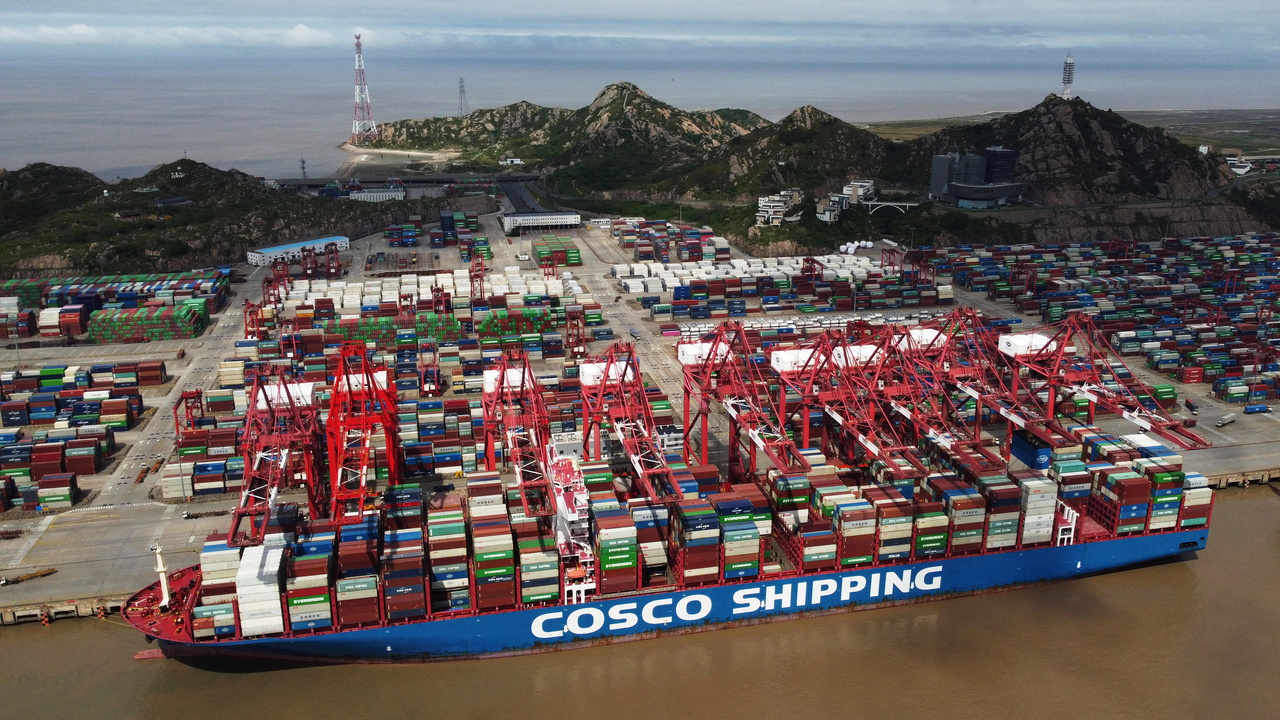SHANGHAI (REUTERS) - Shanghai announced its first new Covid-19 cases outside quarantined areas in five days on Friday (May 20), triggering stricter curbs and mass testing in one district but plans to end a prolonged city-wide lockdown on June 1 appeared on track.
The commercial hub of 25 million found three new cases in the same family in Qingpu district. All had taken three doses of vaccine and their infections were discovered during regular testing, authorities said.
The three had not left their district town over the past 14 days but had visited at least four places, including a supermarket, all of which were sealed off and were being disinfected, authorities said.
The town’s more than 200,000 people have since been re-tested and all results were negative, the authorities said.
“Our district will follow the precise prevention and control measures, do a good job in epidemic prevention and control and achieve dynamic clearing as soon as possible,” Zhang Yan, deputy head of Qingpu district, told an online press conference.
Authorities started to ease the lockdown – which had confined residents to their homes and curtailed business activity – earlier this week after the city hit a milestone of three days of zero community transmission.
City officials said parks would reopen in Shanghai suburbs from Sunday, while other parks could do so from June if they met certain conditions. However, any leisure facilities inside the parks would remain closed.
A plan to reopen four metro lines from Sunday also remains on track, the city government said.
Shanghai has been allowing more people to leave their homes in recent days, with many residential compounds issuing a limited number of passes to dwellers for brief walks or trips to the local supermarket. Still, most remained stuck indoors, relying on delivery apps and government rations.
The almost complete shutdown of Shanghai and strict measures in other cities are the result of a national “zero-Covid-19” policy to end all outbreaks as soon as they occur.
Beijing, home to 22 million people, reported 62 new Covid-19 infections for May 19, up from 55 a day earlier.
China’s capital has struggled to end an outbreak since late April despite significant curbs on movement, with many Beijing residents working from home and a range of shops and venues closing.
But the daily caseload has remained in the dozens rather than exploding like in Shanghai and most other major cities around the world.
‘New normal’
On Friday, Shanghai reported a broad economic decline in April, with many factories shut and workers and consumers stuck at home. The city’s industrial output shrank 61.5 per cent from last year, the biggest monthly decline since 2011.
Retail sales dived 48.3 per cent, significantly steeper than the 11.1 per cent drop nationally, and property sales by floor area sank 88 per cent, according to a Reuters calculation.
The European Chamber of Commerce in China warned this week that many companies and individuals were “seriously considering their China presence”, even though this month, the Covid-19 situation in Shanghai and more broadly in China has been improving.
Analysts at Gravekal Dragonomics estimate fewer than 5 per cent of Chinese cities are now reporting infections, down from a quarter in late March.
To keep the situation stable, many city authorities deploy local border controls, frequent mass testing and vigilantly monitor and isolate any new infections, including through individual building lockdowns.
“This new normal should allow manufacturing supply chains to gradually resume normal operation, but will continue to weigh on consumption, the services sector and small business,” Gavekal analysts wrote in a note.
There have been signs of the economy responding positively to the looser controls in May after the April slump.

Daily container throughput at Shanghai ports has almost completely recovered to levels seen last year, while air cargo throughput and freight vehicle traffic have bounced to about two thirds of 2021 volumes.
While still down 21 per cent from last year, retail car sales jumped 27 per cent in the first half of May from the same period in April, data showed this week.
Policymakers have promised more fiscal and monetary stimulus to help the economy.
China cut its benchmark reference rate for mortgages by a bigger-than-expected margin at its May fixing on Friday, a second reduction this year, as Beijing is keen to revive credit demand to prop up the economy.
Premier Li Keqiang was quoted by state media this week as saying China has policy room to cope with the challenges.
Property and related industries such as construction account for more than a quarter of the economy and were in a downturn even before the lockdowns. A campaign by the authorities to reduce high debt became a liquidity crisis last year for some major developers, resulting in bond defaults and projects being put on hold, unsettling global financial markets.
Xing Zhaopeng, senior China strategist at ANZ, predicted further easing, saying: “Policymakers might have reached a consensus on whether to revive the property sector.”













